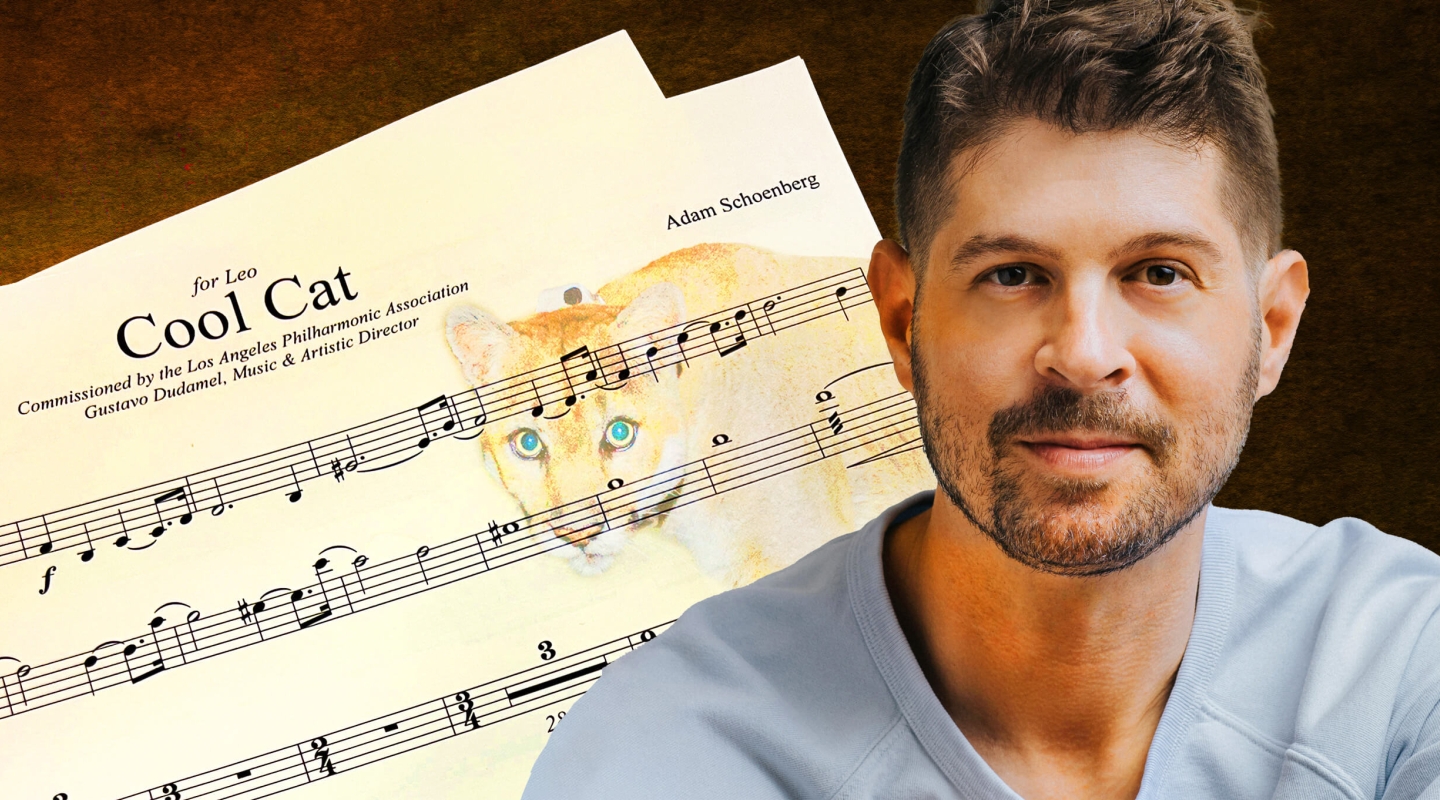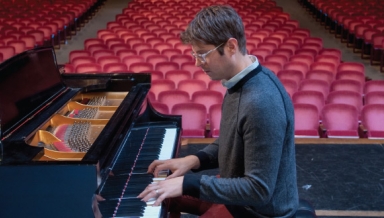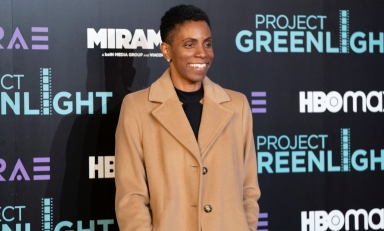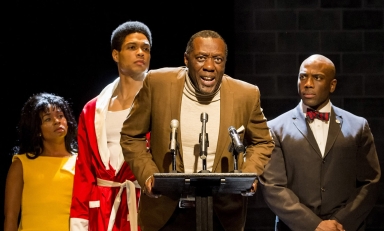Associate Professor of Music Adam Schoenberg found inspiration from ‘L.A.’s coolest cat’—and his latest composition may have helped save his own life
Last December, following the death of P-22 —the mountain lion who called Griffith Park home for more than a decade following his discovery in 2012—the Los Angeles Times published a story about his impact on the city. “An everyday citizen tweeted that the 12-year-old bachelor with the mesmerizing eyes clearly had been ‘L.A.’s coolest cat,’” James Raney reported—and that phrase resonated with Adam Schoenberg, the Emmy Award-winning and Grammy-nominated composer and associate professor of music at Occidental.
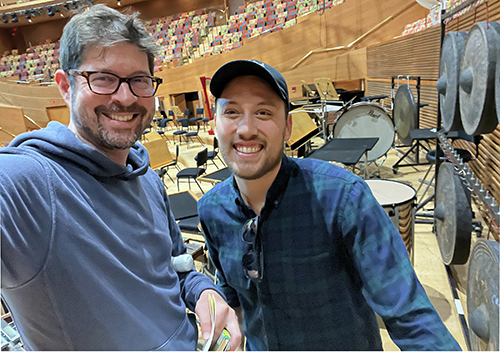
So, when Schoenberg was commissioned by the Los Angeles Philharmonic to create an original piece of music honoring P-22 for an upcoming concert at the Hollywood Bowl, it didn’t take long to name the piece. “I always come up with titles first,” he explains, “and once I was given the commission, Cool Cat came to me rather quickly.”
The five-minute fanfare will have its premiere at the Hollywood Bowl to kick off an evening of music on September 12—exactly 10 years to the day when the LA Phil performed Schoenberg’s first commission for it, Bounce. That piece was dedicated to Schoenberg’s firstborn, Luca, who was 1 month old at the time. Cool Cat is dedicated to Luca’s younger brother, Leo: “He's witty, creative, fierce and determined, much like I imagine P-22 must have been,” Schoenberg says.
Following the premiere of Cool Cat, the LA Phil will perform Philip Glass’ First Violin Concerto (1987), one of the American composer’s most popular works, and English composer Gustav Holst’s enduring fan-favorite, The Planets (1916). In a Q&A for Occidental magazine, Schoenberg—who has twice been named among the top 10 most performed living composers by orchestras in the United States—discusses his approach to writing Cool Cat and the health scare that he has endured for more than a year now.
What was your relationship to P-22? Had you followed his saga over the years?
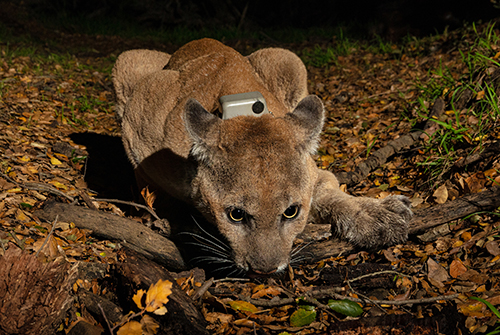
I first learned about P-22 several years ago when my wife and I would hike regularly in Griffith Park. We became aware of his presence once news got out that a puma cat was living inside the park! His story sounded a bit like an urban legend. But it was also a great reminder of the power of nature, even in a vast city like ours. As the years passed I continued to follow P-22 sporadically. Once I received the commission from the LA Phil, however, I really dove in and started researching him in depth in order to have a better understanding of his journey.
You wrote the piece in three weeks. Can you talk about your process—how do you approach a piece of music about a big cat?
During the last three years I’ve developed a new method of composing for me. As a conservatory-trained composer, I first learned to write by pencil and paper. I would then use engraving software and compose directly into a computer program called Finale. Now, I use a custom template in Logic Pro (a digital audio workstation that many producers and media composers use) that contains all of the instruments in the orchestra.
I can improvise and perform each line that members of the orchestra will play (e.g., oboe 1 part, percussion 2, etc.), and eventually build the entire piece in Logic. In this particular case, I was dealing with significant health issues and had terrible insomnia at the time. I ended up writing this piece between 1 and 5 a.m. over the course of three weeks. I’m usually never this prolific, but this particular work seemed to just pour out of me.
This is your second composition for the Los Angeles Philharmonic. How did it come about, and who do you deal with during the creative process?
Composers typically develop relationships with orchestras. Since this is my second commission and third performance with the LA Phil, I’ve gotten to know the administration and some of the players quite well over the years. In this instance, the president at the time reached out to me directly and asked if I would be interested in writing this piece in honor of P-22.
The LA Phil made it clear that they wanted an upbeat and celebratory piece—not an elegy or somber work. I thought about P-22 and his journey crossing two freeways and then setting up a home in Griffith Park. Here was a creature who had defied all odds, who inhabited a space for years that was entirely too small for a big cat to survive in. His mere existence was nothing short of extraordinary, which is why he became a bit of a local celebrity and brought together an entire city. I wanted to capture P-22’s incredible story, as well as the collective energy of our city rooting for him, into something rhythmic and lively.
What can listeners expect from this piece?
Cool Cat was conceived as a concert-opener or fanfare. It’s fast and energetic, and is divided into two big sections (minus the introduction). The main theme that is introduced at the beginning develops and is repurposed throughout the work. My goal was to juxtapose the idea of P-22’s original lush habitat with the urban landscape he was ultimately forced to live in. And I wanted to capture his overarching journey in one single sonic experience. There is heavy use of percussion, such as congas and bongos, as well as trash metals. It's a work that is meant to be fun, upbeat, and get the party started.
You've been very candid about your illness on social media. Can you talk about what you've been going through? Has your work been an oasis or release from your medical issues?
I decided to go public regarding my health struggles as I felt very alone when it all began. I wanted to know if anyone else out there had gone (or was going) through what I was experiencing. During the last few weeks of the 2022 spring semester at Oxy, I started noticing some issues developing. I wasn’t able to see a doctor until the end of May, and that’s when things really began to unravel.
In June 2022, I was officially diagnosed with an acute case of ulcerative colitis (one in 100,000 in terms of severity). I was hospitalized twice that month for multiple nights and lost 21 pounds in 10 days. By October, I had lost nearly 40 pounds. After trying multiple biologics, as well as other western and non-western treatments, it was determined that my only option was to have the J-pouch surgery if I wanted to survive.
Since February, I've endured two major surgeries with at least one more happening the week after Cool Cat premieres. This may sound overly dramatic, but I believe the timing of this commission—and how quickly I was able to write it—really saved my life. Every time I was in the studio making progress on this piece, I felt more energized and alive. It was both cathartic and healing for me and gave my body, brain and heart an extra boost in order to keep on going. It also gave me the strength to make it through the first surgery, which we ended up having to move up by four days as my body was rapidly declining. I am beyond grateful to be here today.
Photo illustration credits: P-22 in Toyon by Miguel Ordeñana. Additional images courtesy Adam Schoenberg.

